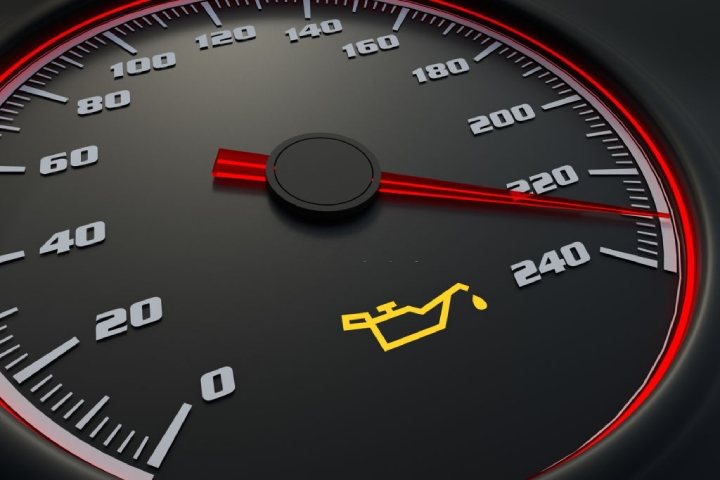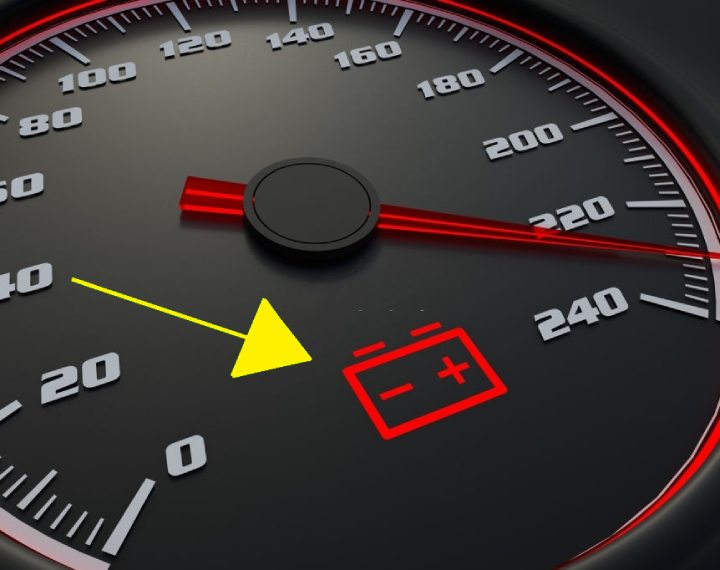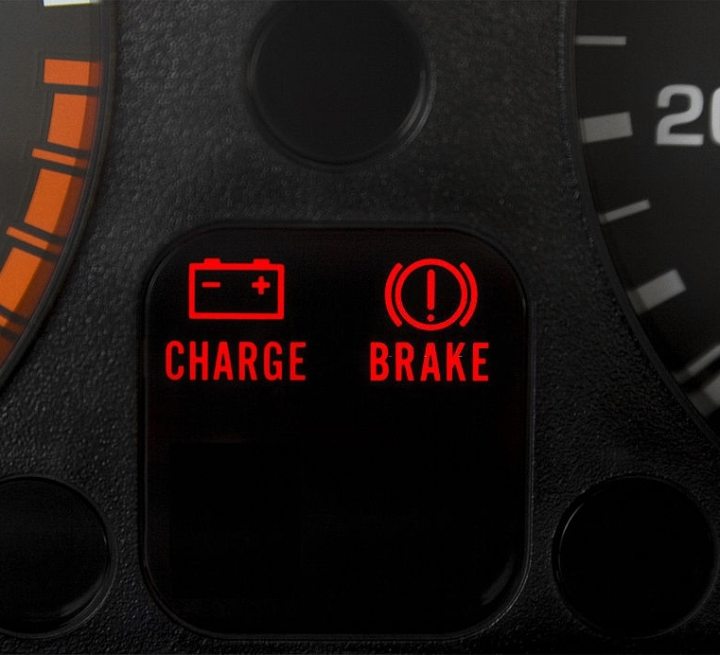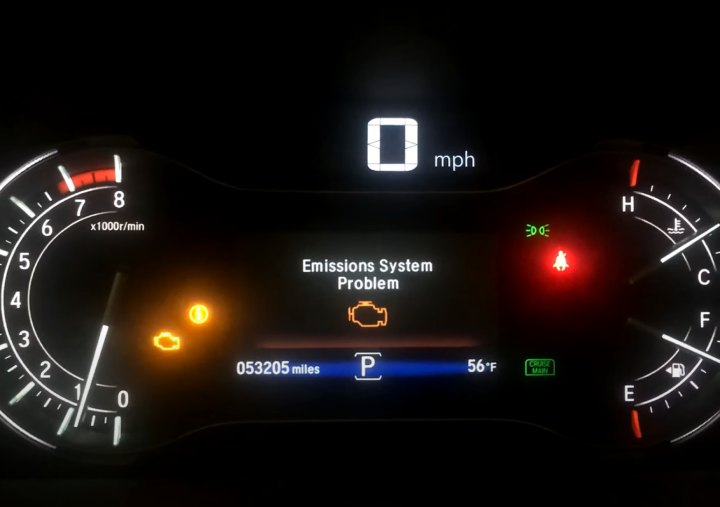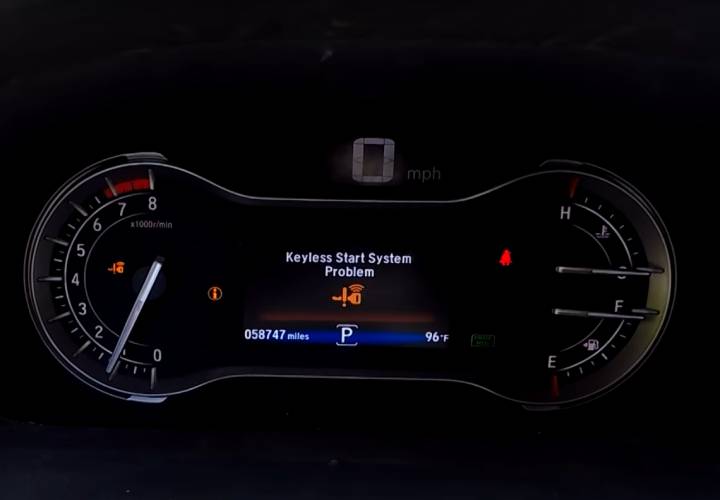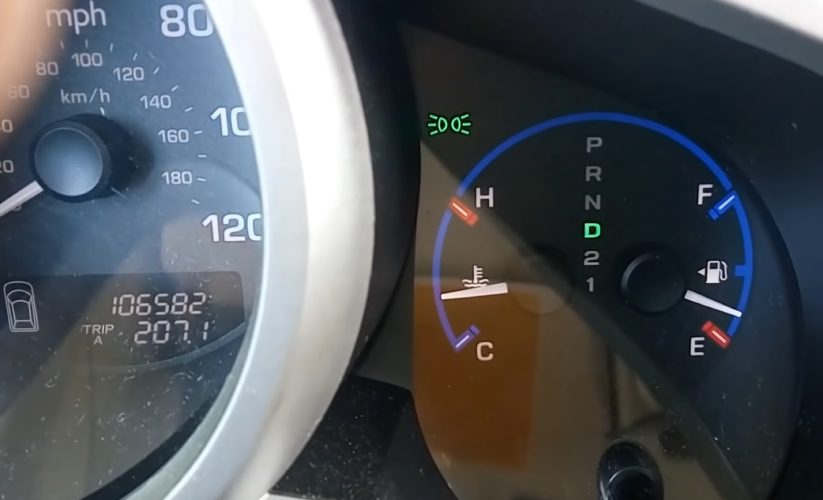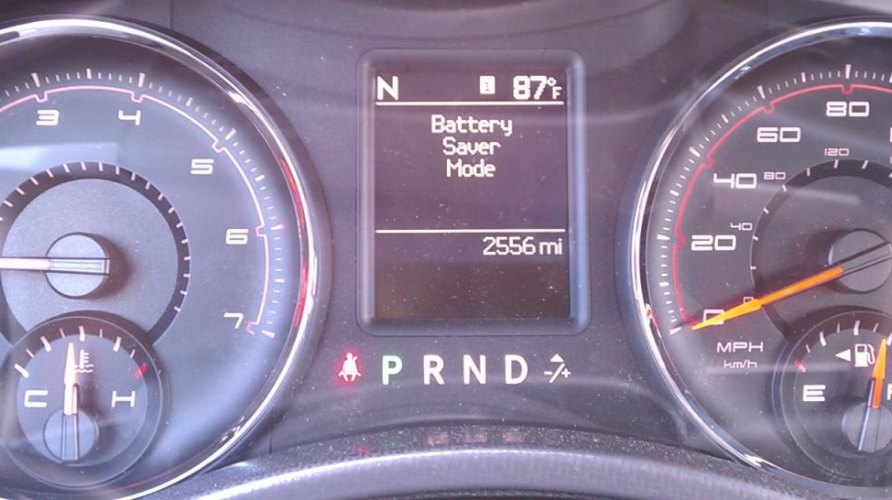A car comes with different warning lights on the dashboard that keeps the driver alert and aware of potential and actual problems. One of such lights is the EPS warning light. If you drive a Hyundai, you might have noticed this light come on. So, what does this light mean for your car?
- Here is what the EPS light means when it comes ON
- What can cause the EPS light to come on?
- How do I fix the EPS problem in my car?
- Use OBD scanner to read codes
- Common issues
- What should I do if the EPS warning comes on while driving?
- Can I drive with the EPS light on?
- How do I reset the EPS light?
- Can you drive without EPS?
- Any recalls addressing the issue?
- Conclusion
Here is what the EPS light means when it comes ON
Seeing the EPS light come on might make you worried, as most lights on your dashboard are designed to warn you about one thing or the other. If you see this light combined with a loss of steering power, your anxiety might increase. Your car becomes more difficult to drive, and if you are not accustomed to manual steering, this might be a whole new unpleasant experience for you.
The EPS (electrical power steering) light comes on when there’s something wrong with the power steering system. However, like other warning lamps on the dashboard, the light comes on for a few seconds when the car is turned on. The light indicates an issue only when it stays on for an extended period.
The lights might also come on if the system is turned off. So if you notice that the EPS light is on, check if the system has been turned off. You can easily turn it back on with the button found in the center console if it is.

What can cause the EPS light to come on?
Since the EPS light comes on when there’s something wrong with the system, there are several things that can cause the lights to come on.
Steering coupler issue
The steering coupler is an intermediary that permits the transfer of movement from the steering wheel to the steering rack. If this coupler develops a fault, the EPS system detects a malfunction and alerts the driver with the warning light.
If your steering coupler is bad, driving it might be very dangerous as the car becomes difficult to maneuver. The steering might suddenly seize up when driving, giving late reactions to other drivers on the road.
Check TSB on the electronic steering that requires a reprogramming
If your electronic steering needs reprogramming, it might cause the EPS lights to come on. You might need to consult TSB# 15-01-019 (Technical Service Bulletin*) to solve the issue. Hyundai released this TSB after numerous owners complained about the EPS lamp illuminating after a couple of thousand miles.
If you are unsure about this TSB, you have to visit the closest Hyundai dealership and let them know about the problem. If they are not aware of the situation, show them the TSB linked above, and they should fix your car for free.
- A TSB is a document that contains information on how to treat different unexpected problems. It is usually issued by the manufacturer and contains detailed solutions.
EPS software outdated
The EPS system has software that oversees and manages its activities; hence if the software has an issue, the system manifests it. An outdated system could cause a lag and glitches in the system. Many drivers reported that the issue disappeared after performing a software update.
How do I fix the EPS problem in my car?
As mentioned above, there are multiple causes that can trigger the EPS warning light. So how do you deal with these problems? The only way to deal with a problem is to know what you’re dealing with; hence the first step is understanding the exact source of the light trigger. Once this is discovered, you can then focus on troubleshooting.
So what is the first thing you should do?
Use OBD scanner to read codes
An OBD scanner is a real lifesaver in detecting the exact problems of a vehicle. The scanner reads the error data on the car’s systems and diagnoses the exact problem in codes that can be interpreted as messages.
To find the exact cause of the EPS warning light, you can use an OBD scanner to detect the issue so that you can troubleshoot. If you do not have one, visit your local repair garage or a Hyundai dealership, and they will do it for you.
Common issues
Once you find the real cause of the light trigger, the next step is to take care of it. If you can handle the correction, you might do so with the help of a service manual or a TSB. Otherwise, get professional help from a mechanic.
Absolute Steering position calibration
If you’re having issues with the angle of your steering wheel, you might need to calibrate the actual wheel angle. In this scenario, the EPS light is usually a warning indicator. The Hyundai TSB (Technical Service Bulletin) contains guidelines on how to perform the calibration. The engine has to be turned off, and the ignition switch turned on to perform the calibration.
Replace steering wheel counter
If you notice the EPS light alongside stiff driving, excessive vibration, clunking noises, or bind and locking, this might be caused by a bad coupler. You can either do this yourself or take it to the mechanic’s workshop for replacement. If you cannot replace the coupler yourself, do not attempt it so you do not cause additional problems.
Check for the EPS software update
Your EPS warning light could indicate outdated software; hence check for a software update to take care of the issue. Various owners fixed their problem by having the Hyundai dealership perform a software update.
What should I do if the EPS warning comes on while driving?
If the EPS warning light comes on while driving, you should not panic as the car remains driveable. You should identify whether or not there are differences you can feel in the steering. If not, you may keep driving the vehicle until you get to your destination.
If there is a noticeable difference in how the car drives, it is recommended to find a safe place and pull over for an inspection. Turn the car off, wait a couple of minutes and turn it back on. Sometimes, this can clear any errors. If the steering wheel is stiffer now, it means that the car’s EPS is off.
The car remains driveable, but you will have a harder time using the steering wheel. You may keep driving the vehicle, but it is important to address the issue ASAP.
Can I drive with the EPS light on?
If your EPS system develops an issue, there is a high probability that it will come with stiff driving. When this happens, it is recommended not to drive like that. Will you be able to drive? Yes, you will, but your steering wheel will stiffer, which might increase the risk of an accident.
The wheels could seize and bind on the road and make you lose control of the car. You might even find it challenging to get the position of your front wheels accurately. In other words, you should not drive with the EPS light on. If you experience stiff driving, try parking as soon as possible and try a system restart.
How do I reset the EPS light?
Turn your car off and turn it back on. The lights on the dashboard temporarily come on for a few seconds. While the EPS light is still on, approximately about 4 seconds after the lights come on, steer the wheel 45 degrees to the left and keep it there till the EPS light goes off.
Restarting the system most of the time takes care of the light. However, if the light does not go off, a more serious problem might be the reason. A deeper examination must then be conducted.
Can you drive without EPS?
It is possible to drive without EPS, but it is not recommended. EPS helps to stabilize the steering wheel and can make driving easier and safer. If you do not have EPS, you may experience difficulty steering, especially at higher speeds.
EPS was not always a safety feature installed on cars, as the first model to have it was the 1951 Chrysler Imperial. However, nowadays, it has become a standard system for every vehicle, and most drivers would probably have difficulties driving a car unequipped with this system.
Additionally, your car may be more likely to experience a rollover accident without EPS.
Any recalls addressing the issue?
There have actually been multiple recalls by Hyundai attempting to fix the problem. One example is the 2017 recall for Hyundai Elentra, addressing the electronic power steering (TSB #17-01-032). This recall was launched to replace the EPS motor on some 2017 Elantra models.
You can click here to check if your car has been recalled and whether or not the issue was sorted.
Conclusion
An EPS system issue is a serious issue that should not be dismissed. The moment you see the light on, the cause should be investigated immediately. Although a system reboot takes care of the light sometimes, it does not always work if there are other problems at play.
Every since I was a little boy, I can remember spending the afternoons in my dad’s repair shop. I got my first car at 16 and it was the best feeling ever!
I have contributed to various automotive publications but decided it’s finally time to settle for something constant.

